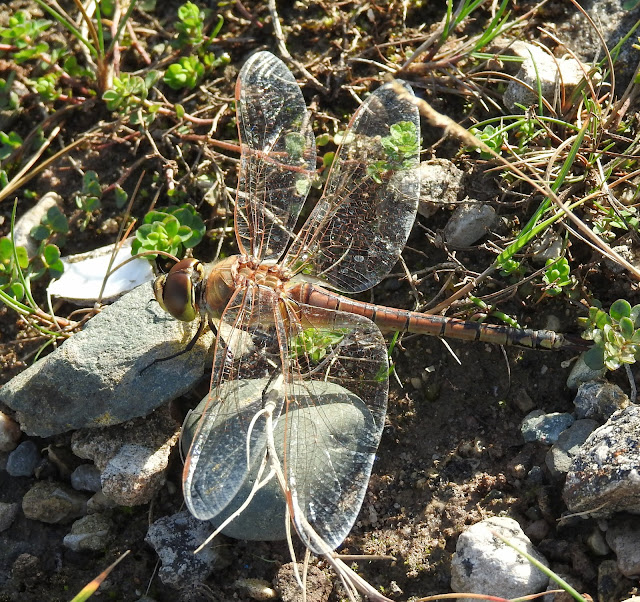The status of the Stonechat in our recording area, is that of 'a breeding bird on the lower slopes of the Bowland Fells'....The Birds of Lancaster & District 2020, and 'a fairly common, increasing breeding bird in upland and coastal areas....Lancashire Bird Report 2021.
In 2022 I have continued to collect Stonechat records as a personal interest. The data through the third quarter July - September is sourced in the main from the Fylde Bird Club (13) LDBWS (6) Andrew Cornall (4), and to a lesser extent these days my own (4), and amounts to 27 records.
The records excluding two, are from breeding territories, some of which I find to be lowland breeders, the most interesting of which was a male and female Stonechat carrying food on Winmarleigh Moss in June, and an adult Stonechat with 2 juvenile at Blackpool Airport in July.
But two records in the breeding season to intrigue me the most were....
A male at Conder Green 26 May.
A female at Heysham Head 17 June.
I've never seen Stonechat at Conder Green or Heysham Head in the summer months, neither have I ever seen records from these two sites.
I've been off the road this past 11 days and had more time to study the history of the Stonechat in our recording area and be reminded of some startling facts about this and some other birds in our area between 1959 - 1998 LDBWS Annual Reports, and to note some dramatic changes and losses over the years.
Although these records start 63 years ago, by todays standards, I find some of them verging on the unbelievable, in particular the Stonechat records just 25 years ago up to 1997.
Stonechat.
1959. A rare visitor, no evidence of breeding.
1964. No birds seen during the summer months.
1970/72/73. Bred successfully at Heysham.
1975. Pair at Halton Park, 5 pairs Clougha, pair at Marshaw, male at Sizergh Castle, female at Bailrigg.
1978. Four males and females with four juveniles at Heysham Harbour appeared to be migrants.
1979. No breeding records, a few winter period records.
1987. No reports from anywhere in the region.
1988. Irregular breeder at one site.
1989. Pair bred at Heysham.
1990/91/96/97. No breeding pairs discovered.
1998. Males in the Trough of Bowland and at Langden suggest breeding.
It is hard to believe, this last record above reads, these two males were the only Stonechats recorded, and that no other records were received in 1998. The following year in 1999, saw the beginning of a dramatic upturn in the fortunes of the Stonechat, which I started to monitor in that year, and which continued for up to 12 years, until the Stonechats endured two severe winters, which sent them back to the kind of depressing numbers of 1998.
Some other bird species from the archives make interesting reading, and if you are a local birder, three of them again verge on the unbelievable*
Nightjar.
*15/20 pairs on Warton Crag 1959. Breeds at Quernmore, Warton, Yealand, Silverdale, Bentham, several Arnside Knot 1960. After 1991 the Nightjar was never mention again in the reports.
Yellow Wagtail.
*With 32 Yellow Wagtail per hour passing Arkholme Viaduct and 30 at Heversham sewage works in 1978....Sounds like a printing error by todays status of a 'scarce and declining breeding bird' in the 2020 report, which reads 'yet again no breeding pairs in our area'.
Whinchat.
*In 1989 a large concentration of up to 40 Whinchat, seen as 20 pairs in the Langden area of Bowland.
Ortolan Bunting.
In 1965 a pair of Ortolan Bunting at Conder Green was not verified.
Cirl Bunting.
In 1968 up to 4 Cirl Bunting seen at Conder Green was not verified.
Little Egret.
An adult Little Egret on 25 May 1970 was the first record for the area.
And Finally.
Comma. Pete Woodruff.
I don't recall ever seeing a Comma butterfly in October, but this one was initially found in the house on Wednesday. I suspect it arrived in a bunch of garden flowers brought for KT. Having captured it in cupped hands, it remained on her finger by the kitchen door for a few minutes before flying off.


.png)



.jpg)
.jpg)





